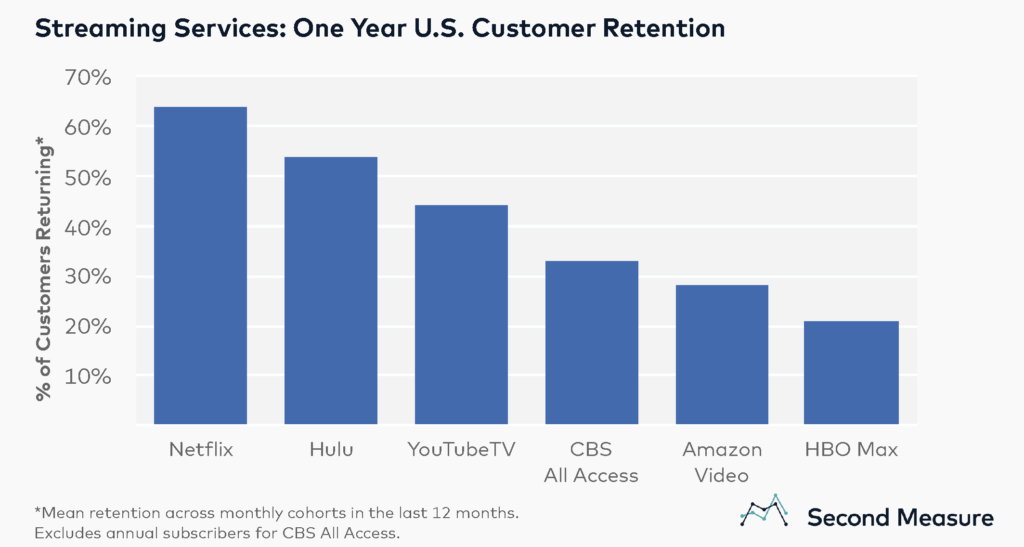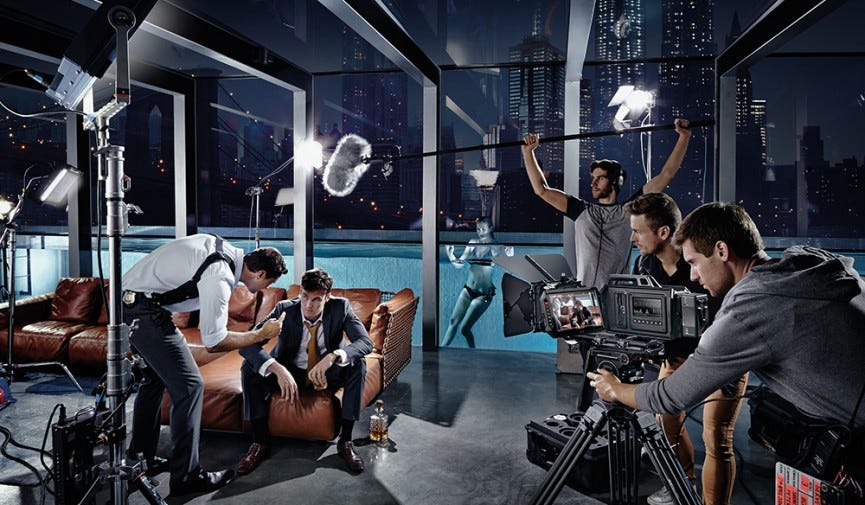Film Influences on TV: How Cinema Has Shaped the Small Screen
Introduction: The Blurring Lines Between Film and Television
The relationship between film and television has always been complex, evolving from competition to collaboration. In the early days of television, cinema viewed the small screen as a rival, fearing it would diminish theater attendance. However, as the entertainment landscape changed, filmmakers and studios began recognizing TV as both a platform for storytelling and a source of inspiration. Today, the boundaries between the two mediums are increasingly blurred, with film techniques, visual styles, and narrative structures deeply influencing television.
From high production values to serialized storytelling, television has absorbed many cinematic elements, elevating the medium into a sophisticated art form. This article explores how film has shaped TV, examining directorial styles, genre evolution, and the growing trend of movie stars transitioning to the small screen.
The Rise of Cinematic Television
Visual Aesthetics and Production Quality
One of the most noticeable influences of film on television is the heightened production quality. Early TV shows were often constrained by lower budgets and faster production schedules, resulting in simpler sets, static camera work, and limited visual effects. However, as audiences began demanding richer viewing experiences, TV producers looked to cinema for inspiration.
Shows like Breaking Bad (2008–2013) and Game of Thrones (2011–2019) adopted film-level cinematography, employing techniques such as wide-angle shots, meticulous lighting, and expansive set designs. Directors like Vince Gilligan and David Fincher (House of Cards, 2013–2018) brought a distinctly cinematic approach to TV, using long takes, carefully composed frames, and cinematic color grading to create a more immersive experience.
Nonlinear Storytelling and Complex Narratives
Film has long experimented with nonlinear storytelling, from classics like Citizen Kane (1941) to modern masterpieces like Pulp Fiction (1994). Television gradually adopted these techniques, moving beyond episodic formats to embrace more intricate, multi-layered narratives.
Series such as Lost (2004–2010) and Westworld (2016–present) utilize flashbacks, unreliable narration, and shifting timelines to engage audiences in ways traditionally reserved for cinema. The influence of Christopher Nolan’s Memento (2000), with its reverse-chronological storytelling, can be seen in shows that play with time to enhance mystery and suspense.
Genre Evolution: From Sitcoms to Prestige Dramas
The Impact of Film Noir and Thrillers
Film noir, a genre characterized by moral ambiguity, shadowy visuals, and complex antiheroes, has left a lasting mark on television. Series like True Detective (2014–present) and Mindhunter (2017–2019) borrow heavily from noir aesthetics, incorporating moody lighting, voice-over narration, and psychological depth. The influence of classic noir films such as The Maltese Falcon (1941) and neo-noir works like Blade Runner (1982) is evident in these shows.
Sci-Fi and Fantasy: From Blockbusters to Episodic Sagas
Sci-fi and fantasy films, with their world-building and visual spectacle, have also shaped TV storytelling. George Lucas’s Star Wars and Peter Jackson’s The Lord of the Rings demonstrated that sprawling, lore-rich universes could captivate audiences—an approach embraced by TV series like The Mandalorian (2019–present) and The Witcher (2019–present).
The Migration of Film Talent to Television
Movie Stars Crossing Over
Once considered a step down, television is now a magnet for A-list actors. Legends like Meryl Streep (Big Little Lies), Al Pacino (Hunters), and Nicole Kidman (The Undoing) have taken on TV roles, drawn by the medium’s capacity for deep character exploration. This shift reflects TV’s growing prestige and the influence of cinematic acting styles on series performances.
Directors Making the Transition
Renowned filmmakers, including Martin Scorsese (Boardwalk Empire), Steven Soderbergh (The Knick), and Jane Campion (Top of the Lake), have ventured into TV, bringing their signature styles to episodic formats. Their involvement has further blurred the line between film and television, proving that the small screen can be as artistically ambitious as the silver screen.
Conclusion of Part One
As television continues to evolve, cinematic influences remain a driving force behind its innovation. The adoption of film techniques, genre conventions, and high-profile talent has transformed TV into a storytelling powerhouse. In the next part of this article, we will explore specific case studies of shows that exemplify filmic storytelling, as well as the technological advancements that have bridged the gap between the two mediums.
Case Studies: TV Shows That Defined Cinematic Television
Breaking Bad – A Masterclass in Visual Storytelling
Few TV shows embody the influence of film as thoroughly as Breaking Bad. Created by Vince Gilligan, the series was lauded for its cinematic visuals, intricate plotting, and morally complex characters. The use of wide desert landscapes, symbolic color palettes (such as Walter White’s green clothing representing greed), and carefully choreographed long takes (like the infamous "Crawl Space" scene) showcased a level of visual sophistication previously reserved for cinema. Director of Photography Michael Slovis, who also worked on films, brought a feature-film approach to lighting and composition, ensuring each shot served a narrative purpose.
Moreover, Breaking Bad incorporated filmic pacing, with episodes often structured like mini-movies—balanced acts, slow-burn tension, and explosive climaxes. The show’s movie-like structure influenced later series, proving that TV could match (and sometimes surpass) the storytelling depth of films.
Twin Peaks – David Lynch’s Surreal TV Revolution
David Lynch’s Twin Peaks (1990–1991, 2017) was one of the first series to fully embrace cinematic surrealism on television. Borrowing from Lynch’s own filmography (Blue Velvet, Eraserhead), the show blended small-town Americana with dreamlike horror, introducing avant-garde techniques to mainstream TV. Unconventional editing, eerie sound design, and symbolic imagery (such as the Red Room sequences) made it a precursor to modern prestige TV. Its 2017 revival, Twin Peaks: The Return, pushed boundaries even further, with episodes resembling abstract art films rather than traditional television.
The Crown – Historical Drama with Blockbuster Grandeur
Netflix’s The Crown (2016–present) brought a cinematic sheen to the historical drama genre. With lavish production design, Oscar-winning directors (including Stephen Daldry), and film-worthy performances (Claire Foy, Olivia Colman, Imelda Staunton), the series blurred the line between TV and epic period films. The use of real-world locations, meticulously recreated sets, and sweeping cinematography evoked classics like The King’s Speech (2010). Each season functions as a multi-hour biopic, showcasing how TV can sustain long-form storytelling while maintaining filmic quality.
Technological Advancements: Closing the Gap Between Film and TV
High-Definition and Beyond
The rise of high-definition (HD) and 4K cameras revolutionized television production, allowing shows to match the sharpness and detail of films. Before the 2000s, most TV was shot on video, giving it a flatter, less cinematic look. But with advancements in digital cameras (like the ARRI Alexa and RED cameras), series such as House of Cards and The Mandalorian achieved the same visual fidelity as big-budget cinema. The use of HDR (High Dynamic Range) further enhanced contrast and color depth, making TV imagery richer than ever.
Virtual Production and the "Volume" Stage
Perhaps the most groundbreaking development is virtual production, popularized by Disney+’s The Mandalorian. Using LED walls (dubbed the "Volume") to display real-time digital environments, the show eliminated the need for green screens, enabling filmmakers to capture complex sci-fi visuals in-camera—much like a live-action movie. This technology, derived from film techniques in The Jungle Book (2016) and The Lion King (2019), has since been adopted by other TV series, dramatically changing how fantastical worlds are portrayed on the small screen.
Streaming: The New Platform for Cinematic TV
The rise of streaming services (Netflix, Amazon Prime, HBO Max) has accelerated the film-TV convergence. Unlike traditional broadcast TV, streaming platforms release seasons in binge-friendly formats, allowing for tighter, movie-like pacing. They also invest in feature-film-level budgets—Stranger Things and The Lord of the Rings: The Rings of Power rival Hollywood productions in scale. Furthermore, streaming has erased rigid runtime constraints, enabling filmmakers to tell stories in episodic formats without commercial breaks or time limits, much like an extended film.
The Changing Landscape of Genres
Superhero TV: From Campy to Cinematic
Superhero TV has evolved dramatically, influenced by the success of the Marvel Cinematic Universe (MCU) and DC films. Early superhero shows, like the 1990s Flash series, relied on low-budget effects and episodic villain-of-the-week plots. But in the 2010s, series like Daredevil (2015–2018) and Watchmen (2019) adopted darker, more cinematic tones, with intricate fight choreography (inspired by films like The Dark Knight) and serialized storytelling. The Disney+ MCU shows, such as Loki and WandaVision, even integrate directly with the films, making TV an essential part of franchise storytelling.
Horror TV: From The Twilight Zone to The Haunting of Hill House
Horror has always thrived on TV, but recent series have embraced cinematic frights. Mike Flanagan’s The Haunting of Hill House (2018) used long, unbroken takes (like The Shining) and psychological depth to terrify audiences, while American Horror Story borrows from anthology films (Trick ‘r Treat, Creepshow) to craft self-contained yet interconnected nightmares. These shows prove that TV horror can be as visually striking and narratively bold as its film counterparts.
True Crime: The Rise of Documentary-Style Storytelling
True crime TV has also adopted filmic techniques. Docuseries like Making a Murderer (2015–present) and The Jinx (2015) use suspense-building editing, atmospheric music, and cinematic reenactments to create gripping narratives akin to crime thrillers like Zodiac (2007). Even scripted shows, such as Mindhunter, blend procedural elements with artful direction, mirroring the tone of David Fincher’s films.
Conclusion of Part Two
From visual innovation to genre evolution, television’s cinematic transformation is undeniable. As case studies like Breaking Bad and The Mandalorian demonstrate, the small screen now offers the same artistic depth and technical prowess as film. In the final part of this article, we will explore the future of TV-film convergence, examining emerging trends like interactive storytelling and the role of AI in production.
The Future of Film and TV Convergence
Interactive Storytelling: Beyond Passive Viewing
One of the most exciting developments influenced by modern filmmaking is the rise of interactive television. Netflix’s Black Mirror: Bandersnatch (2018) showcased how viewers could make choices that alter the story—a concept borrowed from video games but executed with cinematic production values. This "choose-your-own-adventure" approach is expanding, with studios experimenting with branching narratives in shows like You vs. Wild (2019). As streaming platforms invest in interactive technology, we may see TV evolve into a hybrid medium, blending film’s visual language with gaming’s interactivity.
AI and Virtual Actors: The Next Frontier
Artificial intelligence is poised to revolutionize both film and television. Deepfake technology, motion capture, and AI-assisted editing tools (like those used in The Mandalorian) are changing how content is produced. Shows like Deep Fake Neighbour Wars (2023) experiment with AI-generated performances, while post-production relies on machine learning for color grading and visual effects. The controversial use of AI to "resurrect" deceased actors—such as Peter Cushing’s appearance in Rogue One (2016)—suggests a future where virtual performers could become commonplace in TV.
The Streaming Wars and the Battle for Cinematic TV
The competition among streaming services has led to unprecedented investments in high-quality storytelling. Platforms like Apple TV+ (The Morning Show), Amazon Prime (The Boys), and Disney+ (Andor) are vying for prestige by bankrolling shows with A-list directors, film-grade budgets, and theatrical release strategies (e.g., Glass Onion: A Knives Out Mystery premiering on Netflix after a limited cinema run). This trend signals a future where the distinction between a "TV show" and a "film series" may vanish entirely.
Ethical and Creative Challenges
Over-Saturation and the Risk of Homogenization
As TV embraces cinematic spectacle, critics warn of a potential creative downturn. The sheer volume of content—often driven by franchise extensions and algorithm-friendly formulas—risks diluting originality. Marvel’s TV expansions, while financially successful, have faced criticism for formulaic storytelling. Similarly, the reliance on nostalgia (e.g., endless reboots like Gossip Girl or Dexter: New Blood) could stifle innovation. The challenge for creators is balancing cinematic polish with bold, fresh ideas.
Labor and the Cost of Cinematic TV
The push for film-quality TV has intensified labor disputes in Hollywood. The grueling schedules of high-budget shows like The Lord of the Rings: The Rings of Power—where crews worked up to 20-hour days—highlight unsustainable working conditions. Strikes by writers (2023) and actors underscore demands for fair pay amid ballooning budgets. As TV production becomes more film-like, the industry must address these inequities to sustain its creative momentum.
Cultural Shifts in Viewing Habits
The Rise of the "Limited Series" as Event Television
Limited series like Chernobyl (2019) and The Queen’s Gambit (2020) have redefined TV as a medium for self-contained, high-impact storytelling. These shows—often structured like extended films—attract top-tier talent (Jared Harris, Anya Taylor-Joy) and dominate awards seasons, further eroding the line between TV and cinema. Their success suggests audiences crave cohesive narratives over open-ended serialization.
Global Stories, Cinematic Ambitions
Streaming has democratized access to international content, with non-English language series achieving blockbuster status. South Korea’s Squid Game (2021) and Spain’s Money Heist (2017–2021) employ cinematic visuals and universal themes to captivate global audiences. This trend mirrors the film industry’s embrace of world cinema, proving that TV narratives can transcend language barriers when crafted with movie-level artistry.
Final Thoughts: What Lies Ahead?
The interplay between film and television has reached an unprecedented level of synergy. What began as film influencing TV has evolved into a two-way exchange—directors like Denis Villeneuve (Dune) now credit TV’s long-form storytelling as inspiration, while series like Better Call Saul (2015–2022) rival their film counterparts in critical acclaim. Emerging technologies, shifting audience expectations, and globalized storytelling will continue to drive this convergence.
Key Takeaways:
- Technology as a Catalyst: Virtual production and AI are reshaping how both mediums create and distribute content.
- The Prestige of TV: Once seen as inferior, television now rivals film in artistic ambition and cultural impact.
- New Narrative Forms: Interactive, limited, and globalized storytelling are redefining what "TV" can be.
As the lines blur further, one thing is clear: the future of entertainment lies not in choosing between film or television, but in celebrating the best of both.








Comments